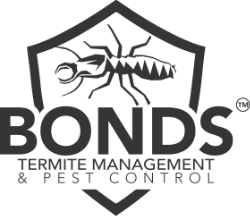Rats in Rockhampton, Yeppoon, Gracemere and surrounds.
There are many different types of rats in rockhampton. Here are the main species:
The Norway Rat (Rattus norvegicus)
- The Norway rat is commonly known as the sewer rat, brown rat, common rat or water rat.
- Norway rats are larger then the roof rat and can grow up to 255mm, they have a snub nose, small close set ears and the tail is short than its body.
- These rats are very widespread and it is possible that these rats are the most economically detriments pest rodent in Australia. They infest almost every building you can think of and will nest anywhere food and shelter is available including rubbish heaps, burrows, river banks etc.
- Internally they commonly nest in walls, roof voids and areas in the property that is undisturbed and has easy access to food and water.
- Norway rats will eat all human food sources, animal food and feed stocks, they do however require regular access to water sources and can travel up to 50m from the nest.
- They live for up to 18 months and can give birth to up to 6 litters a year consisting of up to 10 young rats. It takes between 3-4 months for the young to achieve sexual maturity.
- Norway rats are creatures of habit, once they are established they will often take the same route to find food etc, they are neophobic, this means when baiting or setting traps along their routes it may take some time before they get used to the new objects, baiting programs can take time before results are seen.
The house mouse (Mus musculus).
- These are commonly known as a field mouse, the house mouse is small and has rather large ears, they have a
 pointed nose and their tail is at least as long as its body, they can grow up to 95mm and are a light to dark grey colour.
pointed nose and their tail is at least as long as its body, they can grow up to 95mm and are a light to dark grey colour. - They can live in a variety of places since they are rather small compared with rats, they feed on pretty much anything that we humans eat and they do not need water to survive as they can get all their moisture requirements from grains etc.
- Mice can nest in wall voids, roof cavities, cupboards, furniture even stored food, once a nest has been established they typically do not travel far from the nest, up to 3m if food is available nearby.
- When baiting it is important to make note of where the mouse is seen most often so that bait stations or traps can be placed within the 3m proximity of the nest. This will give you the best possible chance of eradicating the population in those areas.
- A house mouse can live for up to a year and can reach sexual maturity within six weeks, after which they can produce between 6-10 litters per year, each litter can have up to 6 mice. Mice populations can get out of control very quickly and they can take over entire offices or homes in a very short period of time if the issue is not seen to.
- Just think within 12 weeks you can go from having just one mature female mouse to having 42 that are reproducing, another 6 weeks and it increases to 252 sexually mature mice.
The Roof Rat (Rattus rattus).
- Commonly known as the black rat or ship rat, the roof rat is smaller then a Norway rat and has a lighter build, they have a pointed snout, large ears and their tail is longer then its body length, fully grown they can get to 155mm.
- These rats commonly live in buildings in cities and around ports, because they are excellent climbers you will most likely find them in the upper most parts of buildings where they can nest in roof voids and walls.
- Externally they can nest in trees and vines also but they commonly infest ships and boats.
- Roof rats can feed on a variety of foods including fruits and vegetables, like the house mouse they can get most of their moisture from the foods they eat.
- To find food they typically travel withing a 30m radius of their nest but they have been know to travel up to 100m from the nest. If the Norway rat is within the roof rats territory they will most likely be driven away.
